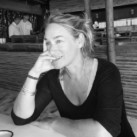
Pierre is the Founder and Director of Santosha School, where the mission is to provide professional, personal, and affordable natural health care services, along with accessible and inclusive spiritual life training rooted in the authentic teachings of Yoga masters like Paramahansa Yogananda. With 25 years of full-time experience in natural health care and multiple certifications in yoga, t’ai chi, bodywork styles, Ayurveda, Sanskrit, and meditation, Pierre ensures the highest quality instruction. Santosha School’s truly holistic approach covers all aspects of the human body, offering diverse classes and fostering a community-oriented environment focused on spiritual growth and self-discovery. MysticMag has the opportunity to chat with Pierre.
Santosha School appears to offer a wide range of holistic services, from yoga to ayurveda and more. Can you elaborate on how these various practices complement each other in helping individuals achieve overall wellness and self-improvement?
In this journey of life, we’re all like gardeners, constantly learning and evolving. It begins with understanding our true nature and developing our power and energy. Ideally, we have wise elders and a nurturing culture to guide us. As we progress through life, we make choices about our contributions and whether to start a family. In the sunset phase, it’s about returning to our spirit.
To thrive in this gardening approach, we need embodied practices like yoga, Tai Chi, or breath-initiated exercises. These help us connect with ourselves daily, acknowledging our energy levels and physical state. It’s not about pushing but being present with ourselves. Beyond daily practices, deeper gardening involves skilled hands-on therapies, much like hiring a master garden coach or a team for excavation.
Then there’s diet and lifestyle, tailored to our unique needs and conditions. We must understand our nature, where we’re planted, and our current circumstances. Ideally, this knowledge should be imparted early in life, but due to educational changes, we often find ourselves teaching those who are older. It’s our hope that younger generations can also benefit from this wisdom.
Your school emphasizes affordability and accessibility to spiritual life and holistic health practices. How do you manage to keep your pricing below industry standards while maintaining high-quality instruction and services?
Each generation faces its unique set of challenges, and in today’s interconnected world, we need to decide how we contribute. For me, this decision was made when I turned 20, 31 years ago. Despite my privileged upbringing, I was deeply affected by the poverty and struggles I saw around me, especially in inner-city life in the United States.
I realized that I needed to become the change I wanted to see in the world. This knowledge, this tribal wisdom, should be accessible to all, no matter where they come from or their circumstances. Sustainability and caring for future generations became essential to me. I made it a mission to ensure that everyone could access this knowledge. Our doors are open at Santosha, and we find ways for those with limited means to contribute.
Santosha operates more like a temple or church, focusing on sincere students and a loving community. The goal is for it to survive beyond me, much like the temples and churches of all denominations. We emphasize local connections and community service. While we don’t heavily engage in online teaching, it’s entirely possible to create a thriving community center where accumulating wealth is not the primary goal.
One of Santosha School’s unique aspects is its focus on community and diversity. Could you share some experiences or examples of how this diverse community has enriched the learning environment and the growth of your students?
Yes, we recently returned from a retreat in Encinitas, California, which holds special significance as it was where my great meditation teacher, Paramahansa Yogananda, landed and brought the teachings of yoga to the United States from 1920 to 1952. Our school welcomes people from diverse backgrounds, and during our retreats, we practice and breathe together in a space that emphasizes our oneness, transcending age or origin.
In Indianapolis, where I live, I’ve consciously created an all-ages accessible yoga posture flow class. This class caters to a wide range of ages and body types, from agile teenagers to older individuals, making it challenging to teach but highly rewarding.
We incorporate various activities, including chanting and singing, to accommodate different body types and backgrounds. Ayurveda, which emphasizes the healing properties of the five elements, guides our approach to help individuals connect with their inner selves and understand their unique attributes.
Diversity is an essential part of our community, welcoming people of different orientations and backgrounds. It’s heartwarming to see our students find a sense of belonging and unity within our community. Our international students often find reflections of their homelands in our center, fostering a rich ecosystem where diversity enriches our lives.
Paramahansa Yogananda’s journey to bring yoga to the US despite the racial and ethnic divisions at the time inspires us to embrace oneness and transcend differences. This understanding is a fundamental part of our school’s philosophy, and we strive to create a safe and welcoming space for all, where we can collectively experience the luminosity and curiosity of our shared humanity.
Could you highlight some of the key principles or philosophies that guide your approach to holistic education and healthcare?
Meeting people at a young age is ideal because it allows them to grow up with a deeper understanding of their bodies and how to care for them. Children witnessing various body types receiving specific treatments and practices can help them grasp the concept of “for whom and when” when it comes to healthcare.
For instance, children may see individuals with slender body types receiving oil treatments to insulate their skin in colder climates, while those with inflammatory tendencies might be offered cooling herbs. Broad body types might benefit from percussive and pummeling treatments to clear mucus and improve their overall well-being.
As children progress into their school years, they can learn meaningful chants and sutras that provide insights into qualities like dryness, lightness, coldness, clarity, subtleness, mobility, and roughness. These qualities can guide their dietary choices and lifestyles as they grow older.
It’s essential to encourage a broad toolset for everyone, beyond just hands-on massage. Learning about diet, lifestyle, sustainable building practices based on the elements (Vastu), and the wisdom encoded in Sanskrit texts like the Vedas can provide a well-rounded understanding of one’s own indigenous or tribal roots.
For older individuals, it’s never too late to embark on a spiritual journey. Retirement or the completion of household responsibilities can be an excellent time to start exploring one’s inner world and spiritual growth. The key is sincerity and the willingness to embrace the path of self-discovery. As the Bhagavad Gita teaches, no effort on this path is wasted, and every sincere effort leads to growth and self-realization.
Santosha School places a strong emphasis on spirituality and self-discovery. How do your programs help individuals on their journey of self-reflection and inner growth, and what role does spirituality play in achieving happiness and well-being?
In the Vedic tradition, there are five layers or “sheaths” that encompass our being. Each of these layers requires its own form of cultivation and care.
Physical Body (Annamaya Kosha): This is the outermost layer, representing our physical form. Maintaining it involves practices like yoga postures, massage, and diet suitable for one’s body type.
Bioenergetic Layer (Pranamaya Kosha): Beneath the physical layer, there is a bioenergetic system, often described as a network of rivers. Practices like breathing techniques help keep this layer balanced and functioning optimally.
Mental and Emotional Layer (Manomaya Kosha): This layer deals with our emotions, thoughts, and relationships. Communication classes and practices in self-awareness help in maintaining harmony in this aspect of life.
Intellectual and Philosophical Layer (Vijnanamaya Kosha): Here, we delve into our life philosophy and deeper understanding. It’s important to have access to meaningful philosophical teachings that resonate with one’s beliefs and offer depth.
Spiritual Layer (Anandamaya Kosha): The deepest layer connects us to the spiritual dimension. Practices like meditation are essential here, allowing us to transcend the limitations of the mind and experience a sense of oneness with the divine.
In a community dedicated to spiritual growth, it’s crucial to create a safe space where people can engage in these practices collectively. Everyone’s individual experiences of spirituality are valid, and they should be encouraged to trust their unique journey.
Having access to elders who can guide and inspire is valuable. Nature and outdoor experiences can also foster a connection to the divine, but they should be complemented with communal practices that help individuals transcend the mind and experience a profound sense of unity.
Ultimately, the Vedic teachings, including Ayurveda and yoga, are for everyone, and learning Sanskrit can be a helpful tool in understanding these ancient wisdom traditions and building trust in one’s inner wisdom.
If you would like to find out more about Santosha School, visit https://www.santosha-school.com/



